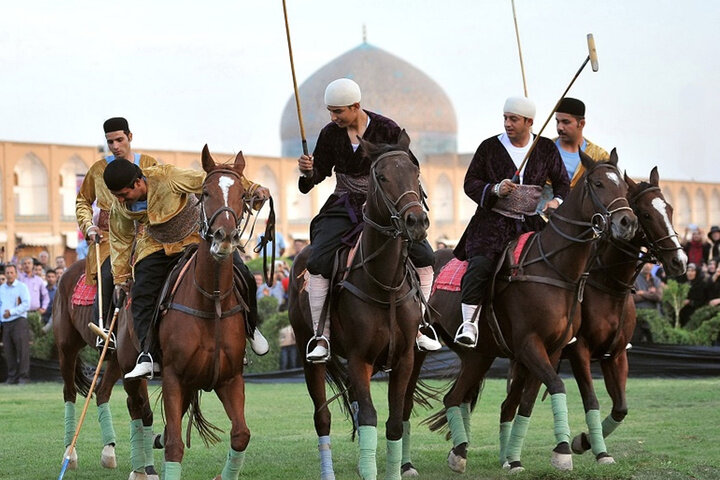TEHRAN – Asfahan Cultural Heritage, Tourism and Handicrafts Bureau, Isfahan, said it is preparing Chogan, a traditional horse riding game with music and storytelling in Naksh-e-Jahan Square.
Amir Karamzadeh explained that the north of Naqsh-e Jahan Square was assigned to the venue for Chogan games, Chtn reported.
Chogan games will be held in this historical square on a specific schedule and calendar if the square’s structure and visual identity are preserved and the appropriate infrastructure is prepared.
Chogan is engraved on UNESCO’s list of human intangible cultural heritage. This game is commonly known worldwide as a polo. The word “polo” comes from the Tibetan word for “pull” where the polo ball was made.
Today, more than 77 countries are holding chogan competitions.
A traditional horse riding game with music and storytelling, Chogan has a history of over 2,000 years in Iran, and is mostly performed in royal courts and urban fields.
Chogan is considered to be the world’s first ball game, the world’s first team sport, and today it is recognized as the world’s fastest team sport and ball game. The first recorded game took place in ancient Persia in 600 BC.
From ancient times, it was considered a game of nobility and was held in another field of specially trained horses. Today, Chogan is played in Iran, Tajikistan, Uzbekistan and Azerbaijan.
In Chogan, two riding teams compete, with the goal being to use wooden sticks to pass the ball to the goal post of the other team. Chogan includes the main game, corresponding musical performances and storytelling. The owners include three major groups: players, storytellers and musicians.
According to UNESCO, chogans are cultural, artistic and movement elements, with a strong connection between the identity and history of their bearers and practitioners. It has a strong presence in literature, storytelling, proverbs, crafts and ornaments, which are valuable parts of its practitioner’s symbolism.
Available evidence suggests that the game spread from Persian Iranian origins to the east via Constantinople, Bactria and Afghanistan, from Tibet, China, Japan and Tibet to India, where it flourished throughout the Mughal (Mogul) dynasty.
Throughout history, the game has been popular among generals, warriors, princes and kings as a means of training cavalry for war.
KD

